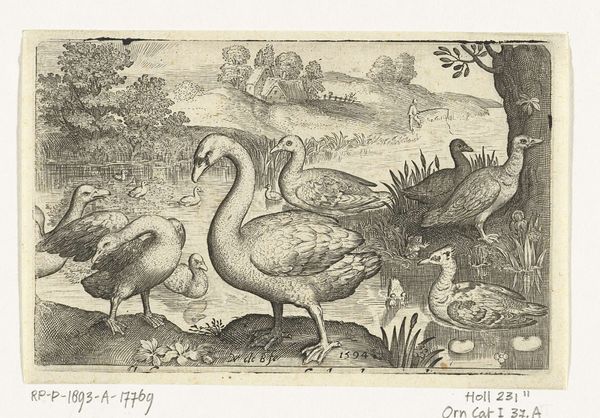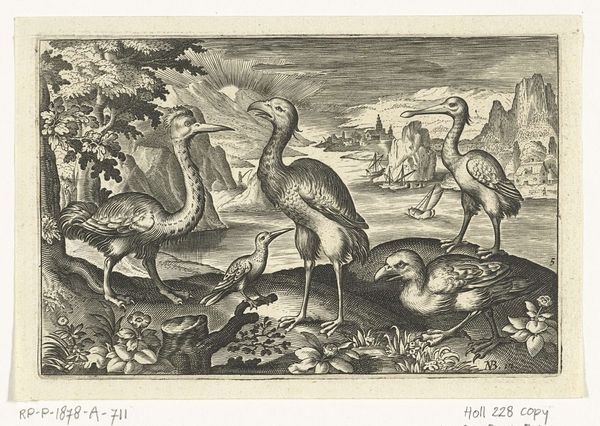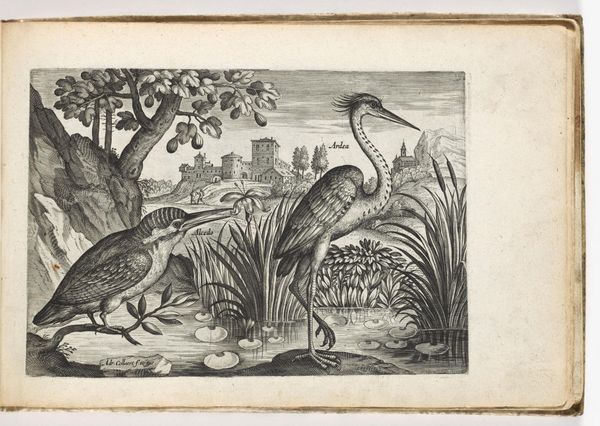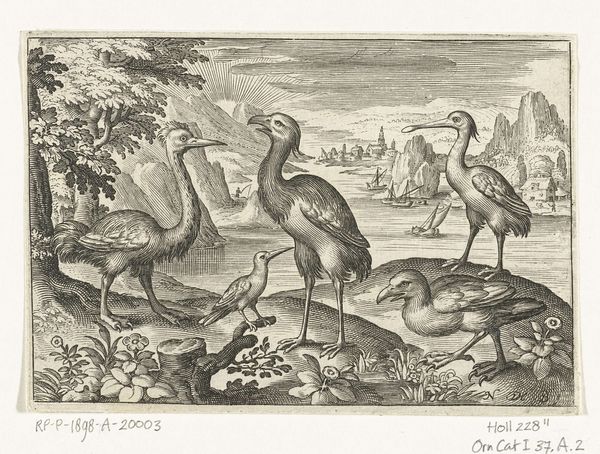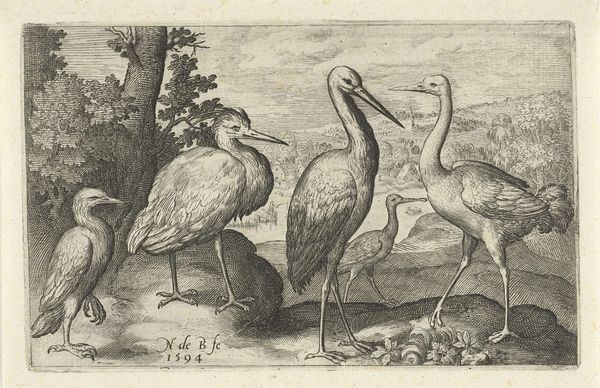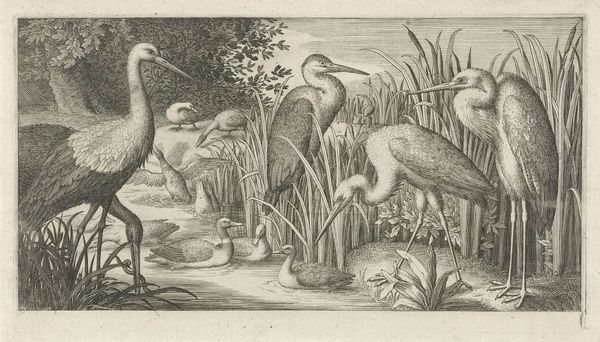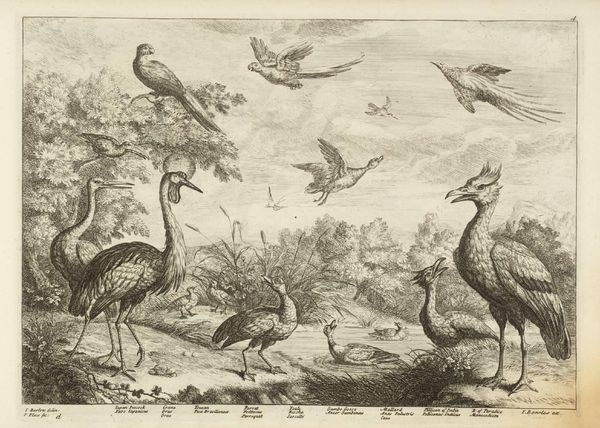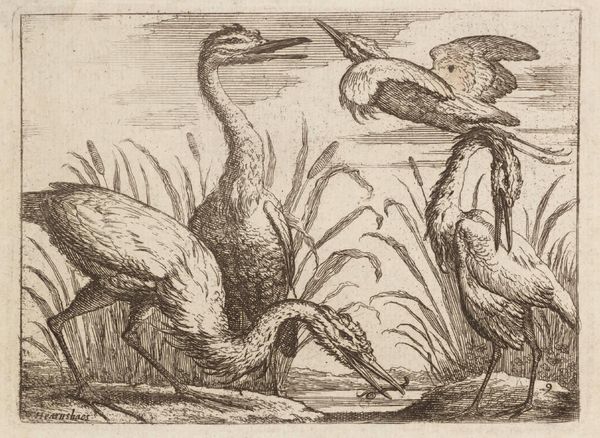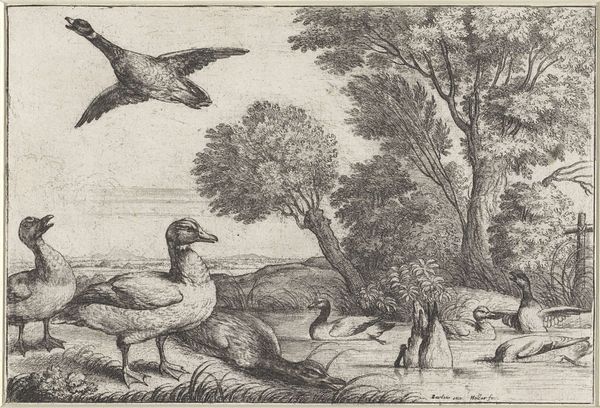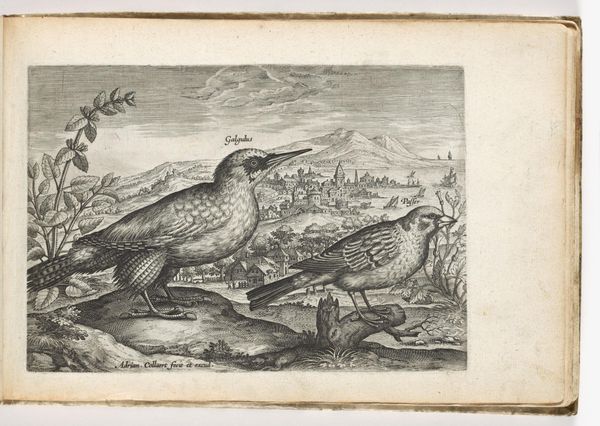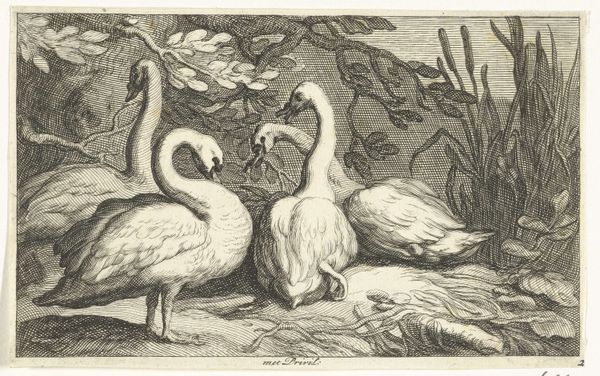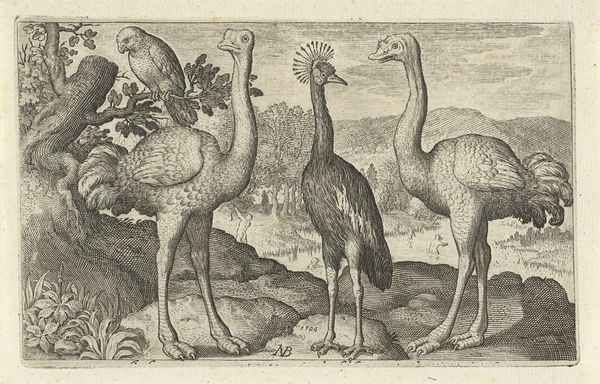
print, engraving
#
dutch-golden-age
# print
#
landscape
#
figuration
#
genre-painting
#
engraving
Dimensions: height 81 mm, width 127 mm
Copyright: Rijks Museum: Open Domain
Editor: We’re looking at "Swans, Geese, and Ducks," an engraving from the Dutch Golden Age. The scene feels tranquil, almost like a snapshot of rural life, yet something about the intense detail makes me pause. What social commentaries or power structures were in play that you notice here? Curator: This engraving presents a seemingly idyllic landscape. However, the very act of meticulously documenting the natural world was a statement. During this period, land ownership and control of resources became increasingly important, and this interest is echoed in landscape art. Do you think this could serve as a record of controlled nature? Editor: Absolutely! I didn't see it that way initially. I suppose my understanding of "landscape" as objective or neutral might be challenged here. The very inclusion of certain elements becomes a political act. For example, would depicting diverse, but indigenous flora, affect the narrative? Curator: Exactly! The specific species, their arrangement, and even the technique used – engraving – were far from neutral choices. Consider also who would have commissioned and consumed this imagery? What does that tell you about the relationship between humans and nature at the time, or about nature's place in relation to power? Editor: So, even in its perceived simplicity, the work hints at deeper issues related to power dynamics, gender, race and class? I suppose this print, seemingly about animals, could become a site for interrogating these hierarchies, as well. Curator: Precisely. Consider it not just a depiction, but an intervention in shaping ideas about land and ownership and how the wealthy displayed that ownership in this time period. Editor: This engraving speaks volumes! Looking closely reveals how intertwined art is with political and economic realities, revealing deeper meaning. Curator: It's precisely through such interrogations that we bring the past into conversation with the present, so we can reveal some of those buried truths that paintings and prints often conceal.
Comments
No comments
Be the first to comment and join the conversation on the ultimate creative platform.
